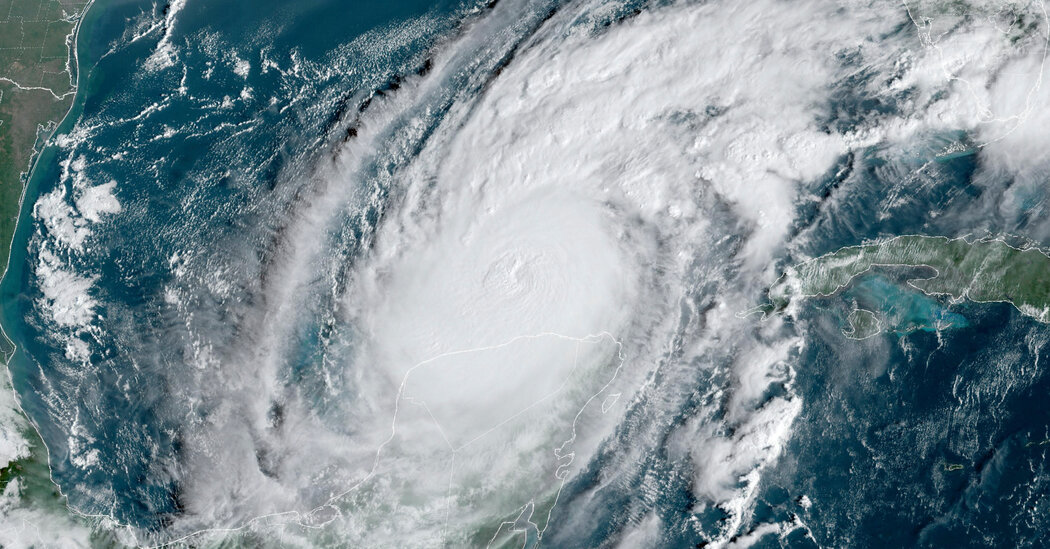Hurricane Milton gained strength over the Gulf of Mexico extremely quickly on Monday, going from a tropical storm to a Category 5 hurricane in under a day.
Much of that intensification was fueled by record warm ocean temperatures in the Gulf of Mexico. Global temperatures are rising long term because the burning of fossil fuels adds greenhouse gases to the atmosphere, helping trap heat near the planet’s surface.
Hurricane-force winds typically stir up cooler ocean water from below the surface that can weaken a hurricane.
Sources: NOAA Coral Reef Watch, National Hurricane Center
Note: Map shows sea surface temperatures on October 7, 2024. All times on the map are Eastern.
But the record heat is occurring not only at the surface, but at greater depths, too. The deeper warm water goes, the more energy is available for the hurricane to go farther and faster, said Hosmay Lopez, an oceanographer at the National Oceanic and Atmospheric Administration’s Atlantic Oceanographic and Meteorological Laboratory.
“That is one of the essential ingredients for hurricane formation,” Dr. Lopez said.
The feverish ocean waters caused rapid intensification, where wind speeds increased by 35 miles per hour or more over 24 hours.
The speed at which Milton grew caused John Morales, a veteran meteorologist of 40 years, to become emotional on air on Monday.
“This is just horrific,” Mr. Morales said, adding: “The seas are just so incredibly, incredibly hot. Record hot as you might imagine. You know what’s driving that. I don’t need to tell you: global warming, climate change.”
Hurricane Milton has since been downgraded to a Category 4 storm and is expected to make landfall in the very early hours of Wednesday as a Category 3. It is still a major threat to infrastructure and human life with powerful winds and a projected storm surge of up to 15 feet in the Tampa, Fla., area.
“For Hurricane Milton, the storm surge is expected to be the main cause of damage to the coastal areas,” said Soheil Radfar, a postdoctoral researcher on coastal hazard modeling at the University of Alabama.
While the downgraded storm is slightly less powerful, the expanse of Milton’s wind field is expected to double in size. A massive wind field was one reason Hurricane Helene was so destructive almost two weeks earlier.
“It won’t have the same extreme core,” Dr. Lopez said, “but it will be very far-reaching with very damaging winds, rainfall and flooding, along with the wind itself.”
Tropical storms in the Gulf of Mexico are 50 percent more likely to undergo rapid intensification during marine heat waves, or periods of hot sea surface temperatures.
Because marine heat waves are increasing under climate change, frequent rapid intensification events can also be expected, according to a study by Dr. Radfar in the journal Communications Earth and Environment.
In August, the National Oceanic Atmospheric Administration predicted this year’s season could rank among the busiest on record, with up to 24 named storms, at least four of which could develop into major hurricanes.
With two months left in hurricane season, Milton is the 13th named storm and the fourth major hurricane following Beryl, Helene and Kirk.
